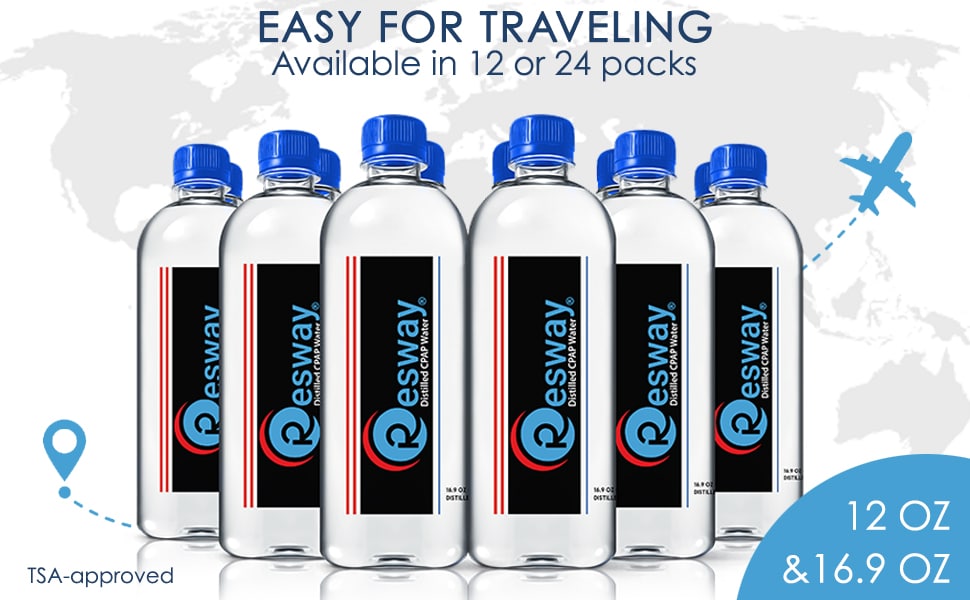Choosing the right CPAP mask when starting CPAP therapy can make the difference between using it and not using it. There are various types of CPAP masks to make them more comfortable for different people.
Finding the CPAP mask that works best for your unique requirements is one of the essential steps in receiving treatment with this method. If your mask is uncomfortable, you are more likely to give up on your treatment altogether.
If you’re wondering what the different kinds of continuous positive airway pressure masks are, you’ve come to the right blog post. This post will tell you everything else you need to know about CPAP masks. Read on to find out more.
What Does a CPAP Mask Do?
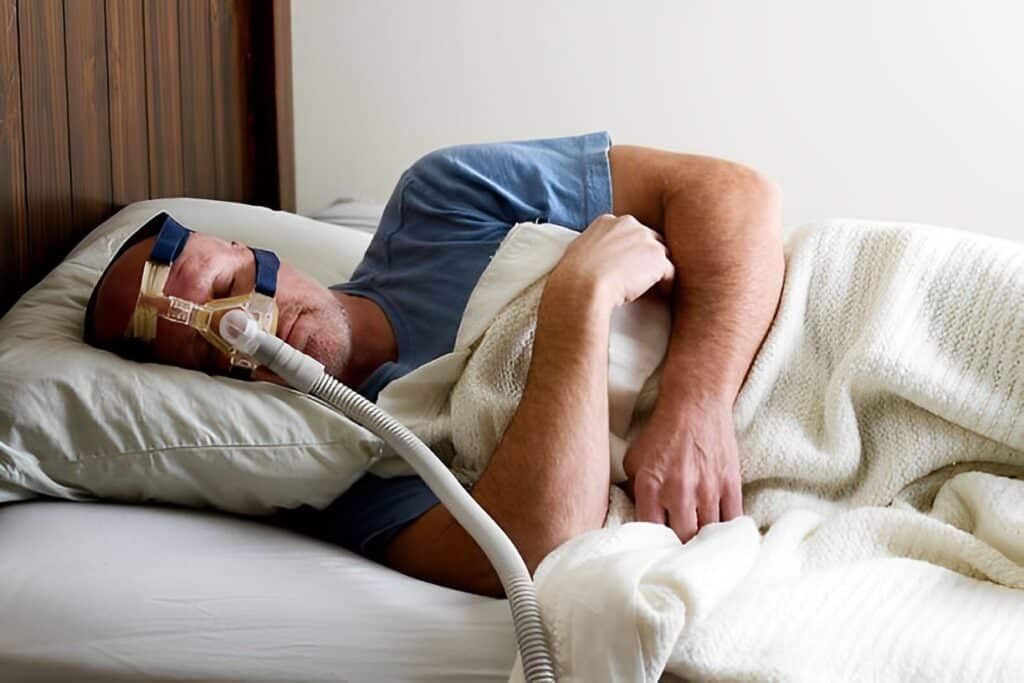
You will use a CPAP mask to get the air from the therapy machine into your lungs. Because wearing a comfortable mask is one of the most significant factors in utilizing your treatment regularly, it is essential to locate a mask that is compatible with your needs and how you live your life.
Most masks come equipped with exhalation ports that release air once you have breathed it in. Have a conversation with the homecare provider you use about the available masks and headgear.
What is a Full Face CPAP Mask?
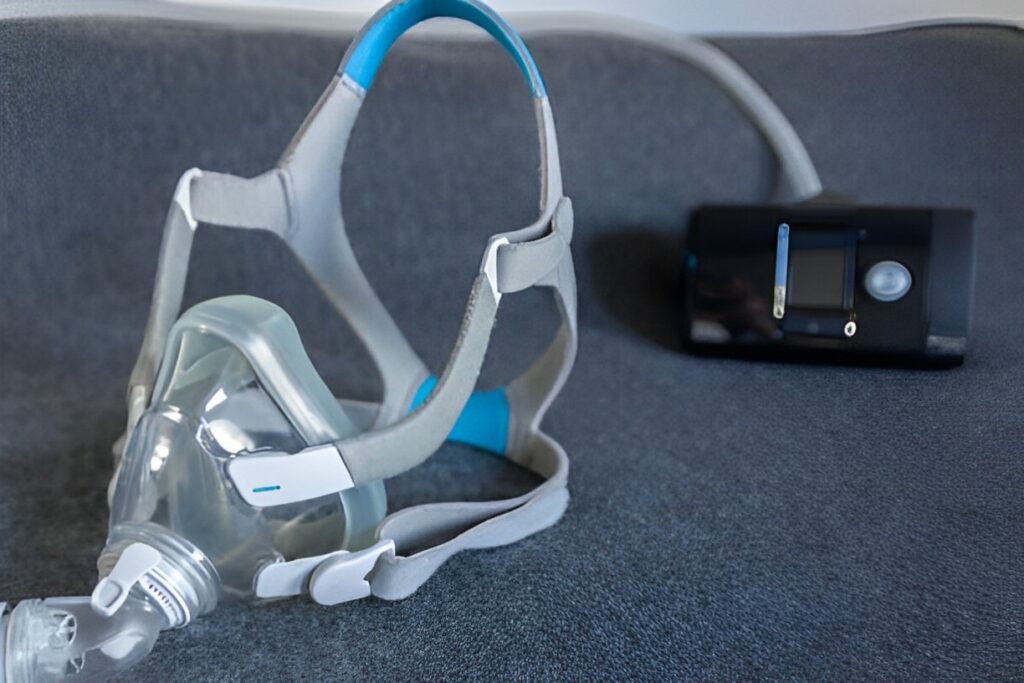
Full-face CPAP masks are designed to fit a broader space, from near the top of the bridge of the nose to underneath the lower lip. This ensures a seal is formed over the mouth and nose. It has adjustable components that conform to the user’s forehead and cheeks, thereby forming a good seal. This also helps to ensure that the user will not have any discomfort while wearing it.
Even though it is larger than the other two choices, some patients find it most comfortable. This is because it enables them to breathe orally (through their lips) without compromising the distribution of pressure, which can even help alleviate feelings of claustrophobia.
People who suffer from dry mouth often find that wearing a full-face mask helps alleviate their symptoms since the humidified air lubricates the oral and nasal passageways. Additionally, patients who require a higher pressure setting for their treatment typically fare the best on this particular style of mask.
Leaks are more likely to happen with a full-face mask because of the increased surface area in touch with the wearer’s face. The therapy may not work as well for people with facial hair, particularly in locations where the mask interacts with the beard, mustache, or sideburns; it will be challenging to make a good seal, and leaks will occur. This is especially true for individuals who have sideburns.
A person who sleeps on their stomach should not select this option because it is uncomfortable for them. On the other hand, those who sleep on their backs should have very positive results while using this type of mask.
What is Nasal CPAP Mask?
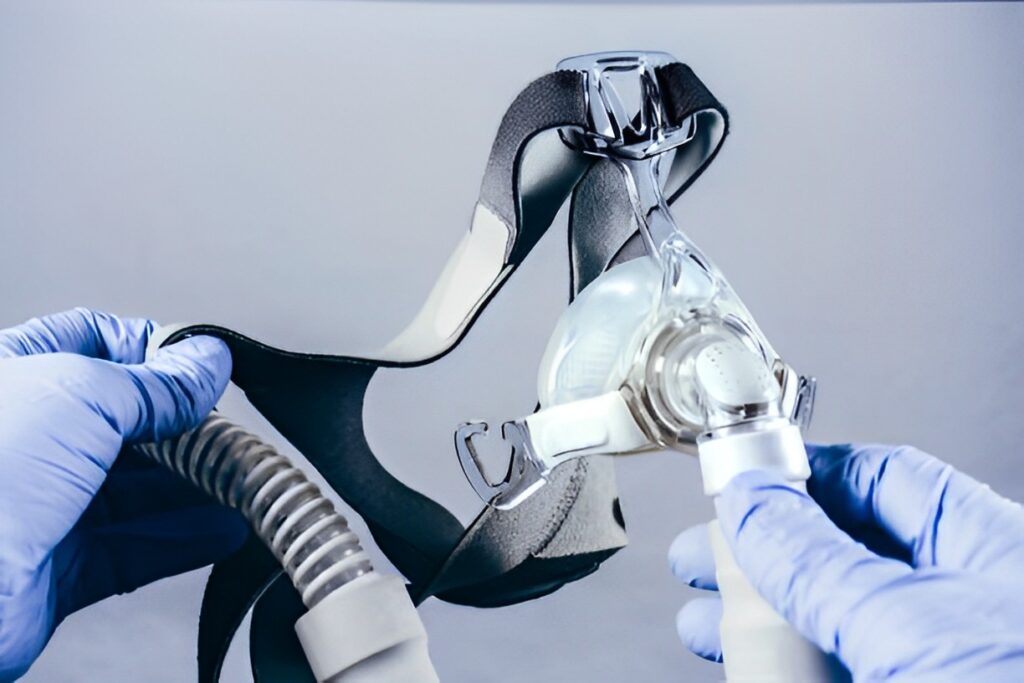
The nasal mask simply covers the area around the nostrils, hence it solely protects the nose. The actual mask has the shape of a triangular dome that is rounded on top and is designed to fit over most people’s faces comfortably. Because they are available in a wide variety of forms and dimensions, nasal CPAP masks are a widely used option because it is possible to find a model that is a good fit for almost any user.
Compressed air is delivered to the space within the nasal CPAP mask by the tubing attached. In order to properly breathe in air, one should only use their nasal passages. Because of this, nasal CPAP is an excellent option for individuals who normally breathe through their nose and require higher pressures than standard CPAP.
The pressure is administered less directly with this mask type, and the sensation is more akin to that of breathing normally compared to other mask kinds.
People who toss and turn in their sleep or sleep on their sides can use this CPAP mask with complete peace of mind.
However, persons with difficulties with their nose or sinuses, such as a head cold or allergies, may find the nasal CPAP mask uncomfortable when these diseases are present.
What is Nasal Pillow CPAP Mask?
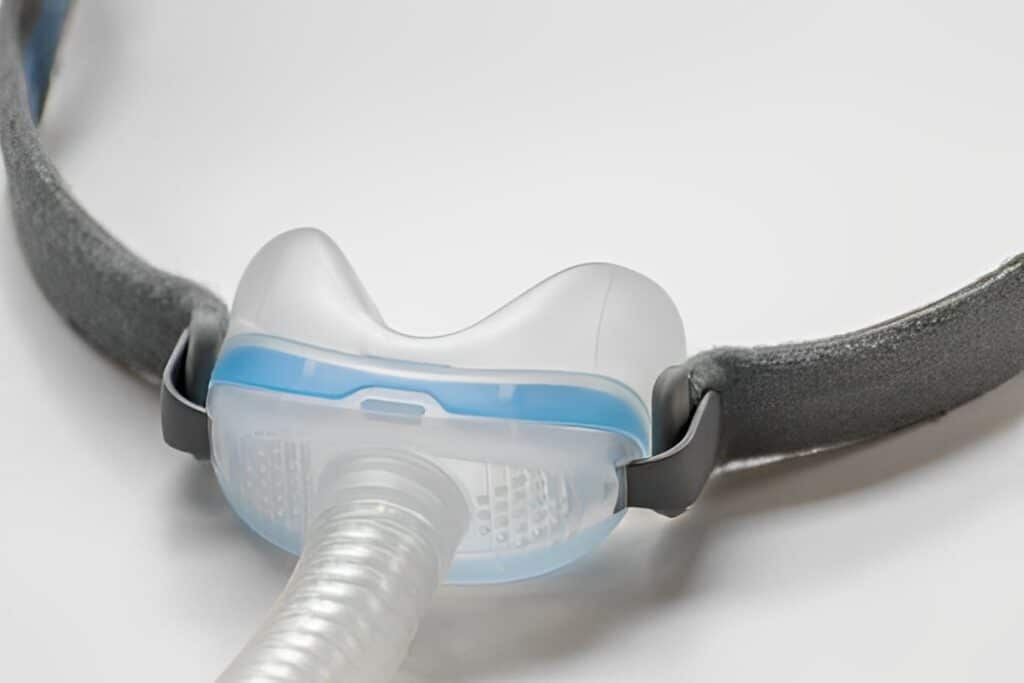
This type of CPAP mask, often known as a nasal pillow, is significantly more compact in comparison to others. Instead of being inserted over the bridge of the nose, it is placed at the very edge of the nostrils, where it rests over the upper lip.
The two cushions or pillows on this mask create a more secure fit across the nose than the single cushion on the nasal CPAP mask, resulting in more efficient pressure delivery.
Because nasal pillows have a hidden headpiece and a smaller profile, they have a more open field of vision. This makes them an excellent choice for individuals who read, use glasses, or watch television before sleep. The nasal pillows, like the nasal mask, are only effective when the user breathes in and out via their nose.
A chin support is an item that some people who prefer nasal pillows may use to help maintain their jaw from dropping when they sleep to lessen the likelihood that they would breathe through their mouths instead of their noses.
As a result of the direct nature of the seal, nasal pillows have a lower risk of allowing air to escape.
This mask works particularly well for those who tend to toss and turn in their sleep.
On the other hand, patients who need higher pressure settings for their CPAP therapy might not feel comfortable utilizing nasal pillows since the delivery system might be too direct for the higher settings.
Because there is no additional hair to impede the integrity of the seal with this sort of CPAP mask, those with beards may discover that nasal pillows are their best alternative.
What is Pediatric CPAP Mask?
Child comfort is a priority while designing pediatric CPAP masks. To alleviate the child’s discomfort and claustrophobia, specialized headgear is intended to sit in a position that keeps it away from the child’s eyes and ears.
This helps to prevent irritation and provides a clean line of sight. Pediatric CPAP masks are designed to be gentle and comfortable to reduce the pressure placed on children’s delicate faces without sacrificing the quality of the seal or the efficacy of the therapy.
Common Characteristics Shared By All Varieties Of CPAP Masks
Even though different types of CPAP masks have different features that may make them more or less appealing to different people, they all have a few things in common.
- The parts of each mask that make contact with the wearer’s face are typically cushioned with latex-free medical-grade materials. This is done to improve the mask’s ability to form a seal with the wearer’s face and to lessen the likelihood that the wearer’s skin would become irritated. However, persons with sensitive skin may have difficulty adjusting to some of the materials used in CPAP masks, including gel, silicone, foam, plastic, or fabric.
- Any mask that does not fit properly runs the danger of leaking compressed air, which is counterproductive to the treatment being administered. Leaking air makes the pressure less effective and can also cause dryness or irritation in the eyes, as well as an increase in the amount of noise that the bed mate hears while trying to sleep.
- Every one of them comes with a headpiece that might assist in keeping them in the correct position. It is also possible to use support attachments, such as chin support, with a nasal CPAP mask or nasal pillows to prevent the mouth from opening while one is sleeping.
- It is anticipated that the tubing that is a part of the delivery system would be able to fit cozily into the mask. Is it possible to avoid water and moisture in your CPAP tubing?
- Some masks feature ports for patients who may also require supplemental oxygen while they sleep, and all masks have sections that allow for the emission of exhaled carbon dioxide. Some masks also include ports for patients who can release carbon dioxide, while others do not.
How to Fit a CPAP Mask (And Why it Matters)
Having a properly fitting and comfortable CPAP mask is very important. You won’t continue to use your mask if it causes you any discomfort or if it causes you to feel claustrophobic in any way.
Comfort is vital, but the fit must be correct to get a good seal. Your apnea treatment will be less effective if there is a leak in the seal since this will cause pressured air to escape.
Leaking air can also contribute to dry or irritated eyes as well as excess noise while you are sleeping, both of which have the potential to disturb not only you but also your bed partner as well as other people in your household.
Common CPAP Mask Problems
The perfect CPAP mask would be one that was not only efficient but also very comfortable to use. You may need to try out a few different masks before finding the one that works best with your CPAP machine as you become familiar with using it on a daily basis.
If you are having any issues with the fit of your mask or the comfort it provides, be sure to let your healthcare professional know. People who use CPAP masks could experience a variety of unwanted side effects.
Below are the most common CPAP mask problems:
Marks on the face
The headgear that comes with most masks can leave marks on the face that you don’t want and often gets in the way of hairstyles. When developing brand-new masks, certain companies have taken this consideration into account.
Pressure ulcers
Lesions known as pressure ulcers or injuries can develop in the nose, mouth, or face areas when CPAP masks touch the bony structures.
Nose dryness
People who wear nasal masks are more likely to experience nose dryness and irritation due to positive airway pressure. Using a humidifier, which lowers the amount of air resistance encountered by the patient when breathing through the nose, can make CPAP therapy easier to bear.
Congestion
Beginning CPAP therapy can induce congestion in the nose, making it difficult for air to move through the nasal passages. This is similar to having a dry nose. To remedy this issue, you could find that taking particular drugs or switching to an oral nasal mask is useful.
Difficulty withstanding the application of pressure
Some individuals report feeling uncomfortable when exhaling against the pressure set on the CPAP machine. Working with a medical professional to adjust the pressure settings and other alterations to improve comfort is one way to handle this problem.
Claustrophobia
Some people have claustrophobia and may feel nervous when they wear masks because they don’t like being in small spaces. Those people might fare better with a nasal-pillow mask as their respiratory protection device. People with claustrophobia should begin by wearing the mask for a small period of time and then progressively increase the amount of time they spend wearing it.
How To Choose The Right CPAP Mask
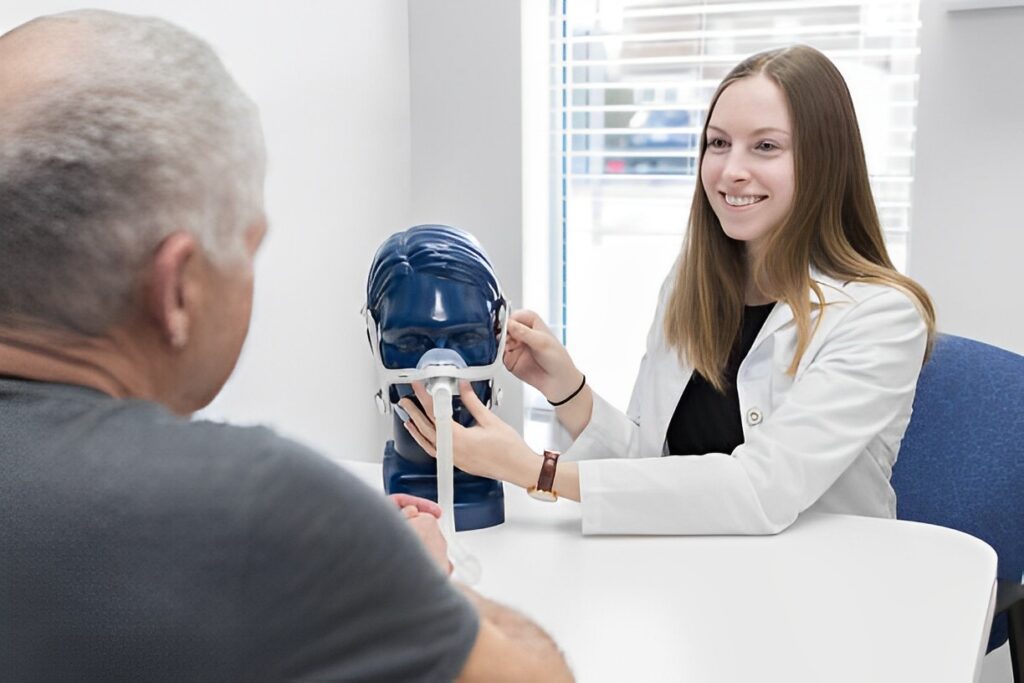
If you can get a better night’s sleep due to the treatment choices available, you should see a significant increase in your overall energy level. Choosing the appropriate CPAP mask will be one of the most critical decisions you will have to make.
Because of the uniqueness of each individual, there is not one style of CPAP mask that is suitable for everyone. You can locate the CPAP mask that will work best for you if you take the time to evaluate your sleeping patterns, facial profile, and unique breathing requirements. This will guarantee that you get the most out of your therapy.
Because there is such a broad selection of various CPAP mask types, shapes, and sizes, finding the one that is the most comfortable for you can initially feel like a bit of a challenge.
The ease of wearability of the mask is of the utmost importance. If you choose a CPAP mask that isn’t comfortable for you, it won’t help you achieve your ultimate aim, which is to ensure that you have a higher-quality sleep every night. Instead, it could lead to recurring problems.
How Do I Know When I Should Replace My Mask?
It is essential to the success of your sleep therapy that you regularly replace any worn-out or broken equipment. When it comes to updating your mask, there are a few things you need to keep an eye out for, including the following:
- Degradation of the seals in the mask
- A mask that has been ruined due to incorrect cleaning.
- A mask that does not adequately fit the wearer.
Check with the company that provides your home care services about the replacement choices covered by your insurance policy.
Conclusion
Now that you have a general understanding of the different types of CPAP masks on the market, it’s essential to know how to fit them properly.
If your mask doesn’t fit right, it can leak and be uncomfortable, making it hard to use your CPAP machine.
That’s why we offer free discovery calls—you can speak with one of our experts and find the best mask. We understand that everyone’s needs differ, so we want to ensure you get the perfect mask for your sleep apnea therapy.
Frequently Asked Questions
It appears that there is a leak in my mask. What action should I take?
Verify that all of the connections are secure. If your mask has an adjustable function or a forehead arm, the first thing you should try to fix the leak is to tweak such features. If the situation has not improved after attempting the above measures, try adjusting the helmet’s straps.
The mask should have as much slack as feasible while maintaining its ability to create a seal. If you press the mask too tightly against the face, it may cause air leakage because the fabric may crease and fold. If necessary, you should discuss switching to a different mask size or type with your homecare provider.
It seems like my skin is getting red. What action should I take?
It seems that your mask is overly constricting. If your mask has a forehead arm or another adjustment feature, the first thing you should attempt is to readjust that. If necessary, you must adjust the straps of the hat. It’s possible that you bought the wrong size mask. Your homecare provider should be able to fit you for a mask. A full-face mask or nasal cushions may provide a better fit.
What exactly is the function of a chin strap?
If you plan on using a nasal or nasal pillows mask, you won’t need a chin strap. They go around the crown of your head and under your chin and prevent you from opening your mouth when you sleep by doing so.
My eyes are red, painful, dry, or swollen. What am I to do?
The mask may be allowing air to get into your eyes. You might try moving the mask around on your face by first pulling it away from your face. The mask may be excessively constricting; in that case, you should loosen the straps on your headgear.
Does this blog post help you? Let us know your thoughts!




